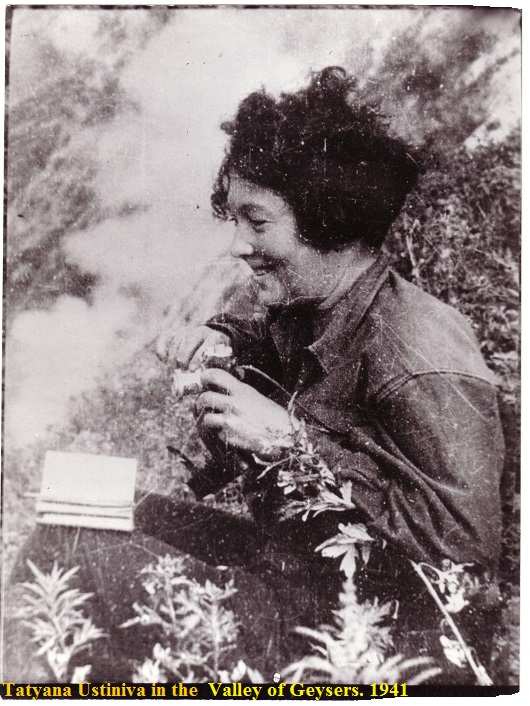August 10, 2008
The world celebrates the anniversary of the discovery of the Valley of Geysers (Kamchatka Peninsula, Russia). Seventy-five years ago, people learned about the existence of the main Kamchatka nature miracle. The cluster of geysers, fumaroles and hot springs in this valley were only discovered by a local scientist of the Kronotsky reserve, Tatyana Ustinova and her guide Anisifor Krupenin in 1941. She published her findings fourteen years later, but there was little exploration of the area until 1972. A systematic survey was undertaken in the mid-1970s, and an automatic monitoring system was introduced in 1990. Over thirty geysers were given names; among these was the Giant geyser (Velikan), capable of producing a jet of water reaching up to 40 meters (130 ft). From the 1980s, the area was promoted across the USSR as one of the tourist magnets of Kamchatka and the Russian Far East. Foreign tourists were allowed into the valley in 1991. About 4,000 tourists visited the site annually.
 The Valley of Geysers (Russian: Долина гейзеров) is a geyser field on Kamchatka Peninsula, Russia, and has the second largest concentration of geysers in the world. This 6 km (3.7 mi) long basin with approximately ninety geysers and many hot springs is situated on the Kamchatka Peninsula in the Russian Far East, predominantly on the left bank of the ever-deepening Geysernaya River, into which geothermal waters flow from a relatively young stratovolcano, Kikhpinych. Temperatures have been found to be 250 °C, 500 m below the caldera ground. It is part of the Kronotsky Nature Reserve, which, in turn, is incorporated into the World Heritage Site "Volcanoes of Kamchatka". The valley is difficult to reach, with helicopters providing the only feasible means of transport.
The Valley of Geysers (Russian: Долина гейзеров) is a geyser field on Kamchatka Peninsula, Russia, and has the second largest concentration of geysers in the world. This 6 km (3.7 mi) long basin with approximately ninety geysers and many hot springs is situated on the Kamchatka Peninsula in the Russian Far East, predominantly on the left bank of the ever-deepening Geysernaya River, into which geothermal waters flow from a relatively young stratovolcano, Kikhpinych. Temperatures have been found to be 250 °C, 500 m below the caldera ground. It is part of the Kronotsky Nature Reserve, which, in turn, is incorporated into the World Heritage Site "Volcanoes of Kamchatka". The valley is difficult to reach, with helicopters providing the only feasible means of transport.
On June 3, 2007, a massive mudflow inundated two thirds of the valley. Oleg Mitvol of Russia's Service for the Oversight of Natural Resources said "We witnessed a unique natural event, but the consequences of such a natural catastrophe are irreversible". The World Heritage Site also expressed its deep concern over the issue. "This is tragic for humankind, in that we have lost one of the great natural wonders of the world", the World Wildlife Fund spokesman commented. On June 5, it was reported that a thermal lake was forming above the valley. The landslide occurred while the documentary Wild Russia was filmed; it features footage of before and after the disaster.
 The extent of permanent change is not yet clear, but may be less than was originally thought.
The extent of permanent change is not yet clear, but may be less than was originally thought.
 Currently a lot of geysers restore erupts back to normal.
Currently a lot of geysers restore erupts back to normal.
Photos #2 and #3 by Igor Shpilenok, 2016
http://news.zapoved.ru/2016/08/09/mir-otmechaet-yubilej-so-dnya-otkrytiya-doliny-gejzerov/